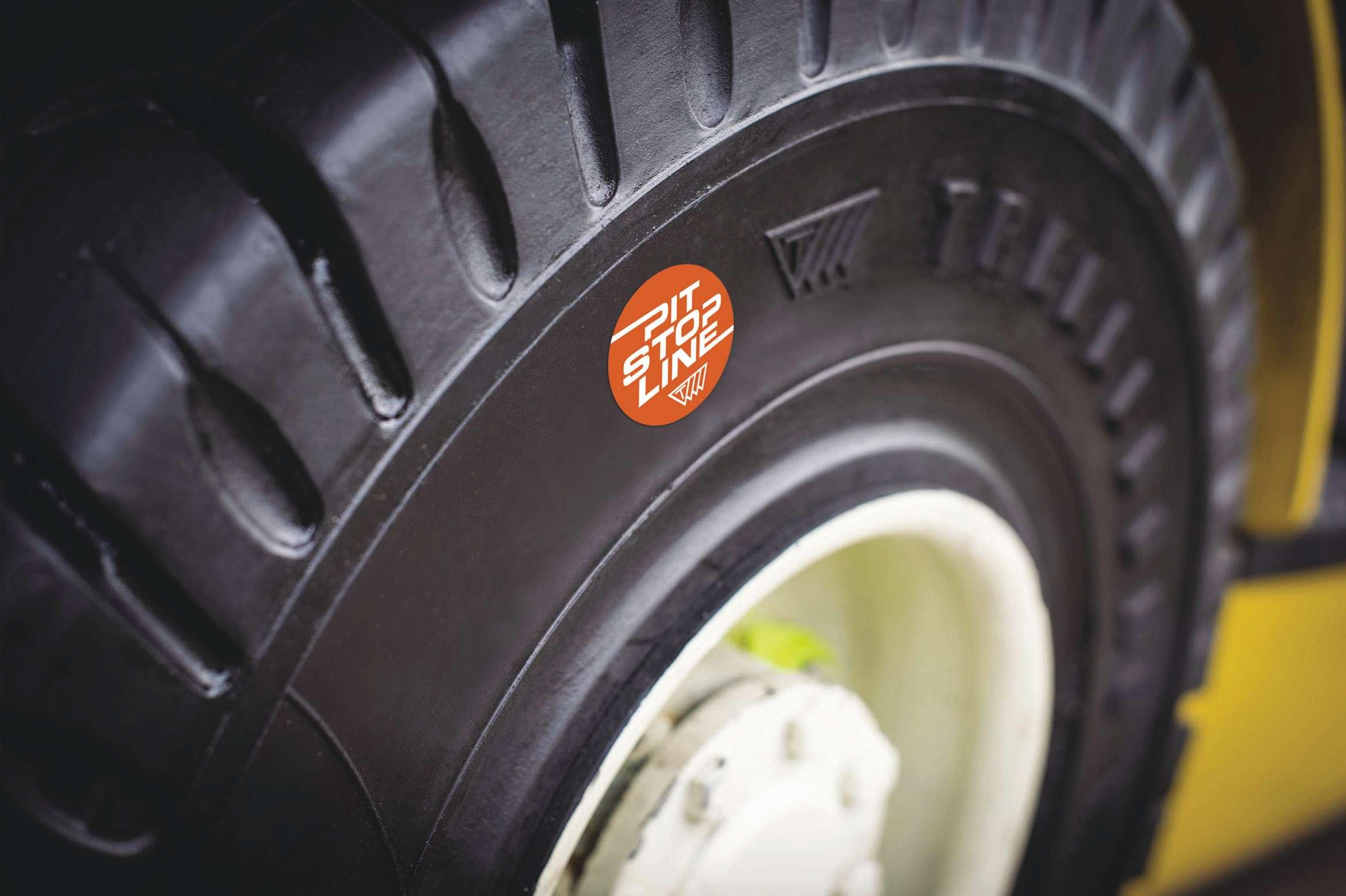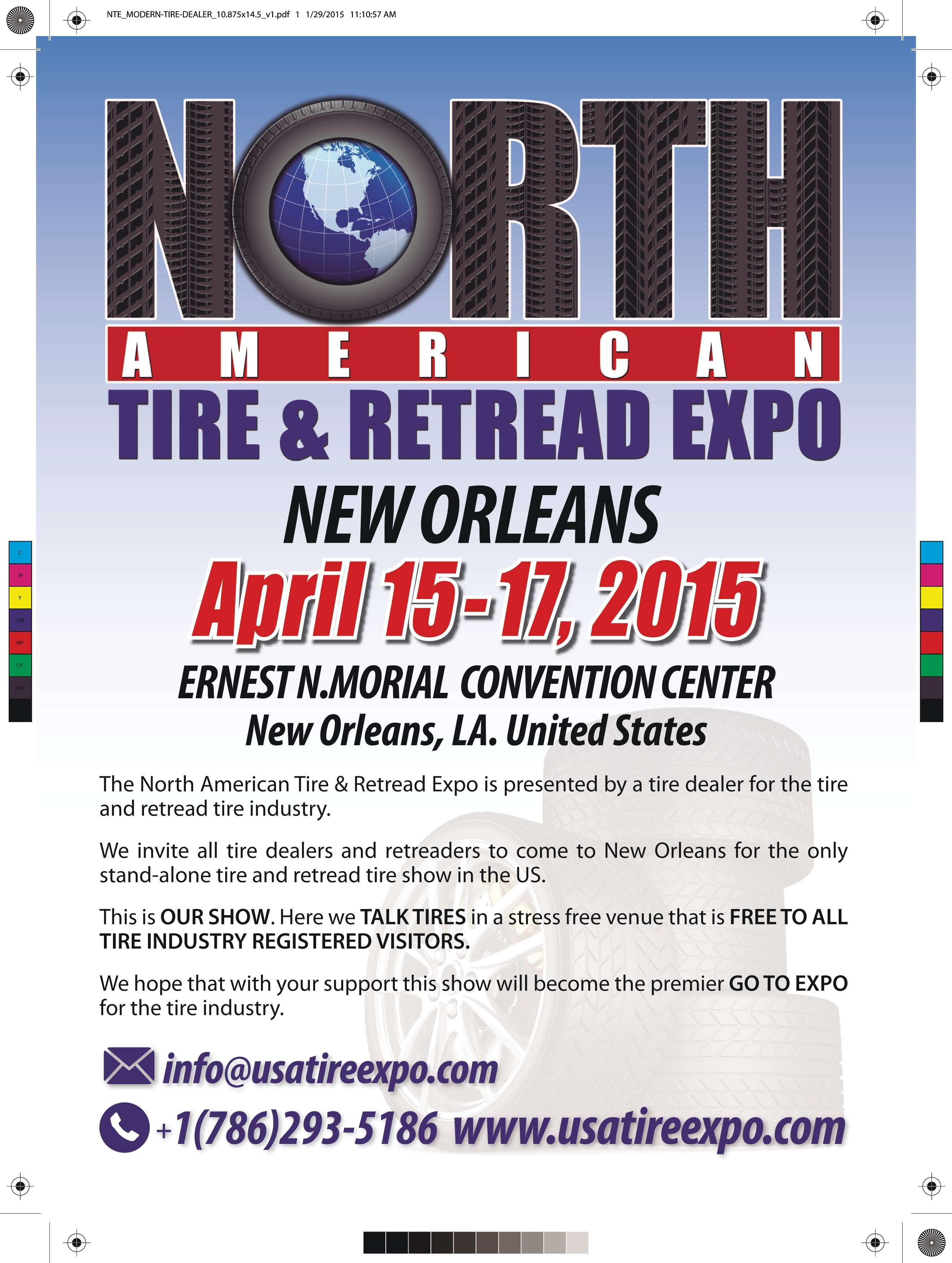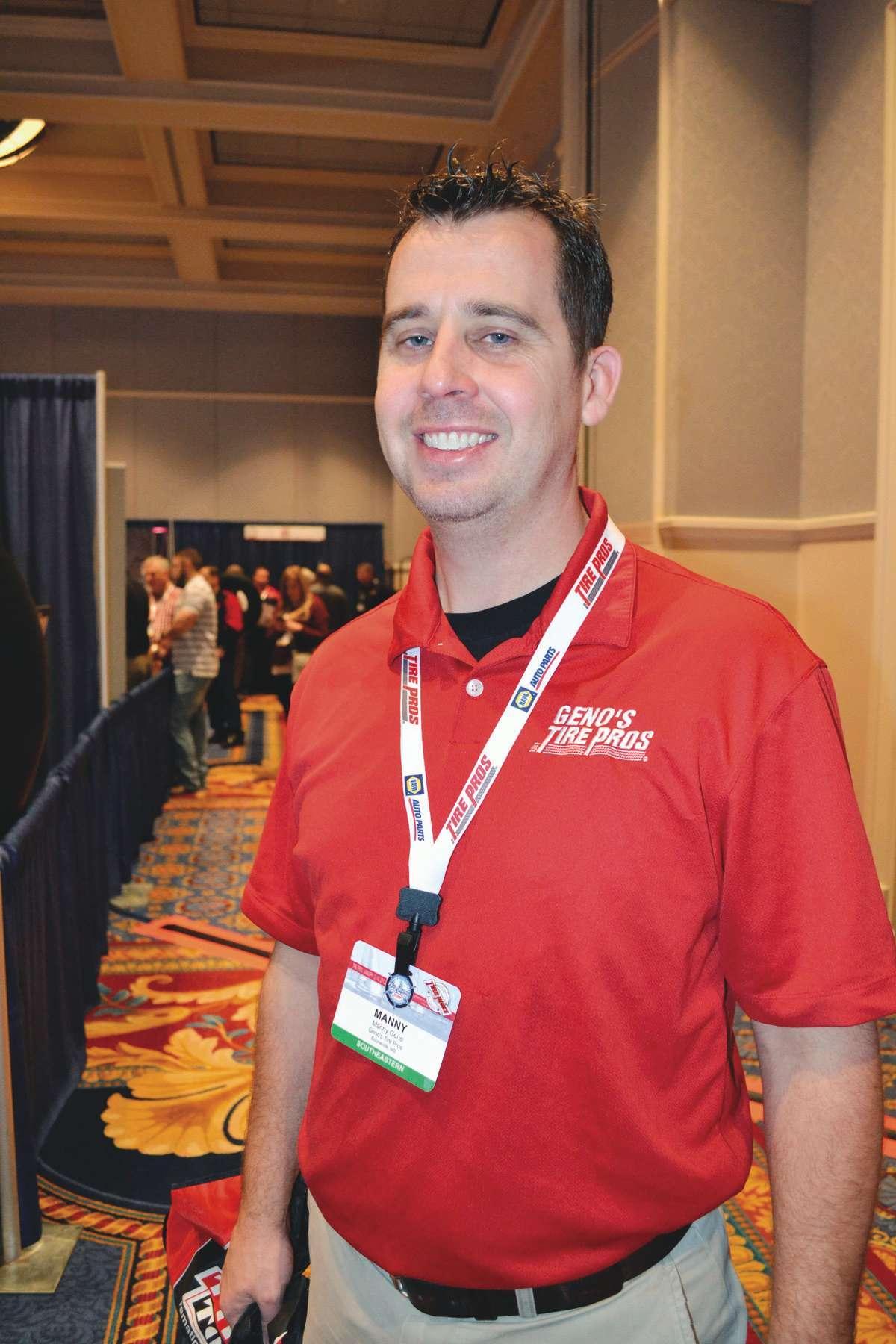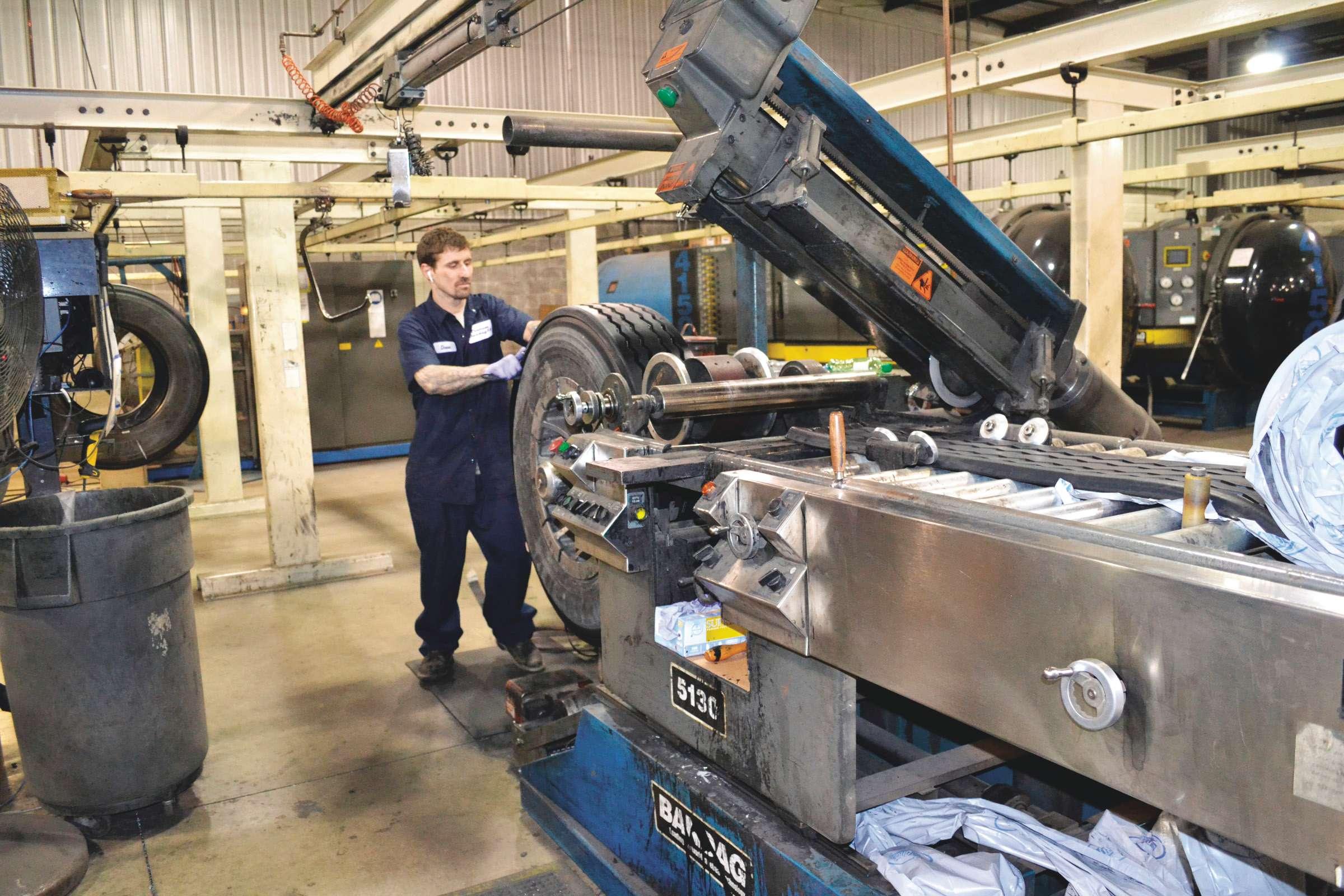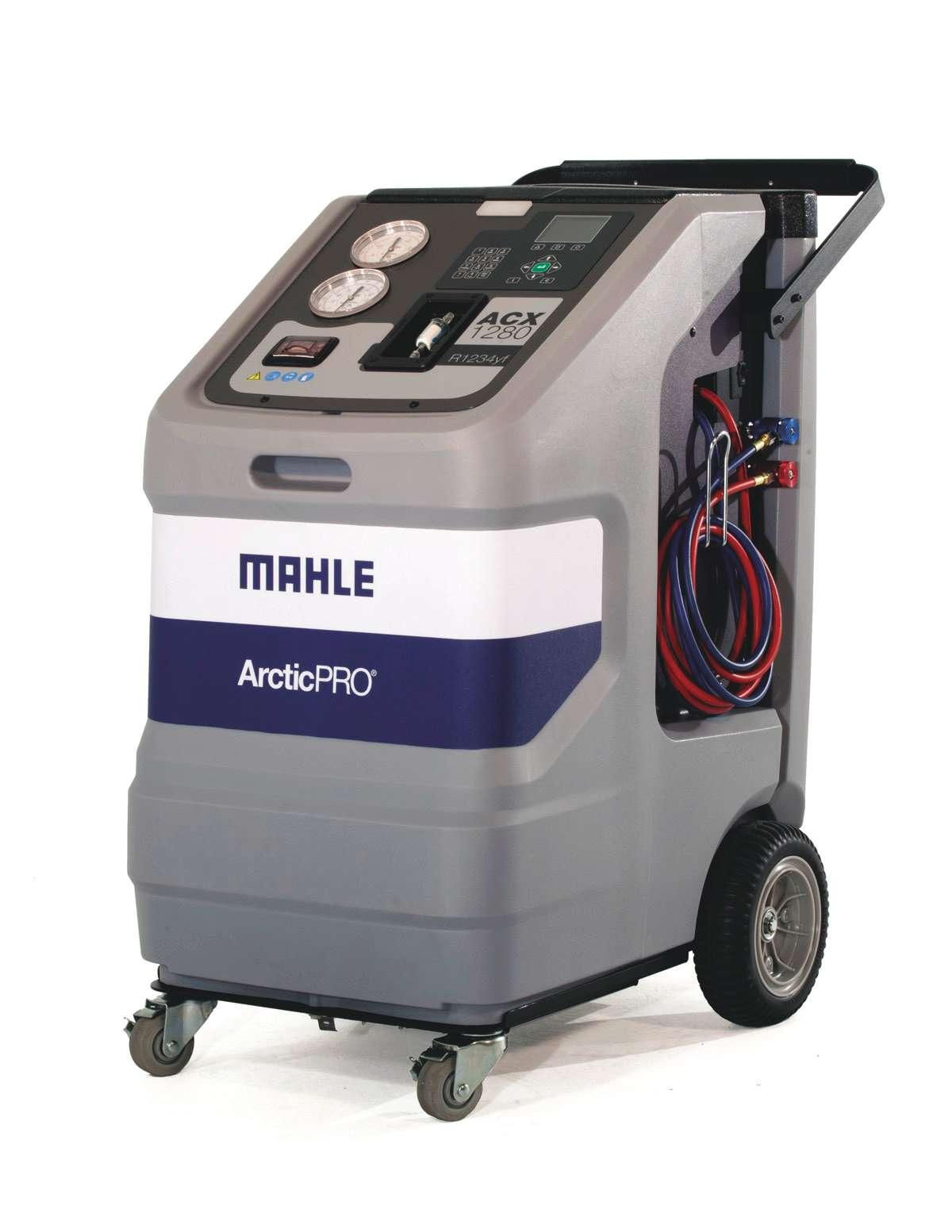
10 minute read
Sales of industrial tires

from Modern Tire Dealer - April 2015
by EndeavorBusinessMedia-VehicleRepairGroup
Industrial tires Sales of industrial tires pick up as ports and construction sites get busier
By Ann Neal
When the mining industry slumped, OTR retreader Noah Hickman of H&H Industries Inc. looked elsewhere for business. “We’ve branched out into markets such as ports, construction, and other areas to combat the slowdown of the coal market,” says Hickman, whose Oak Hill, Ohio-based company holds the No. 25 spot on Modern Tire Dealer’s “2015 Top 100 retreaders” list.
Te type of tire being retreaded has not changed. “Most of these tires we’re capping are the same: 1800-33,18.00-25 for ports, 25-inch for construction, and all sizes for material handling,” says Hickman.
More activity at the nation’s ports and on construction sites is boosting sales of industrial tires, too. “Economic recovery and a strong dollar encourage consumer spending,” says Bruce Besancon, vice president of marketing for Alliance Tire Americas Inc.
Tom Van Ormer, director of pricing for East Bay Tire Co., a wholesaler, exporter and commercial dealer with nine locations in California and Hawaii, says a rebound in business at rental and construction companies is boosting demand for forklif and material handling tires.
Continental Tire the Americas LLC also sees more demand for forklif tires and tires for harbor and port operations. “We are expecting to grow another 30% in 2015 as we continue to prove the lowest cost of ownership,” says Gary Sass, U.S. sales manager for commercial specialty tires.
Alliance says it developed the Galaxy Giraffe XLW with extremely sturdy sidewalls, special tread design and a very large, fat footprint to handle dynamic loads and provide stability for the operator.
Rovince International Corp. believes demand for forklif and material handling tires will steadily increase in 2015 thanks to more transit and a general increase in commerce, according to Troy Rudnick, who heads up marketing for the California-based industrial tire distributor.
Jim Enyart, technical service manager at BKT Tires USA Inc., a subsidiary of Balkrishna Industries Ltd., says the prospects for 2015 are defnitely improving. “We are optimistic with the improving economy and expect this market to improve as the year develops.”
Fleets are becoming more cost conscious and more aware of driver comfort benefts, according to Justin MacLanders of Michelin North America Inc. As a result, the company is seeing more demand for radial tires and growth in the industrial market. MacLanders is the original equipment key account manager for the company’s industrial and earthmover product line.
Camoplast Solideal Inc. expects the steady growth in the materials handling segment to continue throughout 2015 in Europe and in North America.
“We’re seeing a defnite resurgence of diferent industries particularly in the manufacturing segments where they’ve been a litle dormant for a number of years. So we anticipate some growth across the board,” says Darren Straten, product manager for material handling.
Some regions are growing more than others. “Obviously the Northeast and the Rust Belt are seeing a lot of their manufacturing coming back. We’re also seeing quite a signifcant amount of growth in the southern states,” says Straten.
So what does a strengthening economy mean for forklif and material handling tires? MTD asked several manufacturers and distributors for their perspectives on technologies and products.
MTD: What are the technological or market trends in forklif and material handling tires?
Besancon, Alliance: Tere are tens of thousands of forklifs running on smooth concrete foors in warehouses and on loading docks, but there are also many that are being used in equipment yards, outdoor environments, construction sites, and military bases.
Material handling equipment regularly faces the same challenges. If you look at container terminals in ports, for instance, you can see the challenges that a container handling machine faces every day: steaming hot asphalt in many places, UV radiation all day long, shifing center of gravity, heavy loads, and 24-hour-a-day operation.
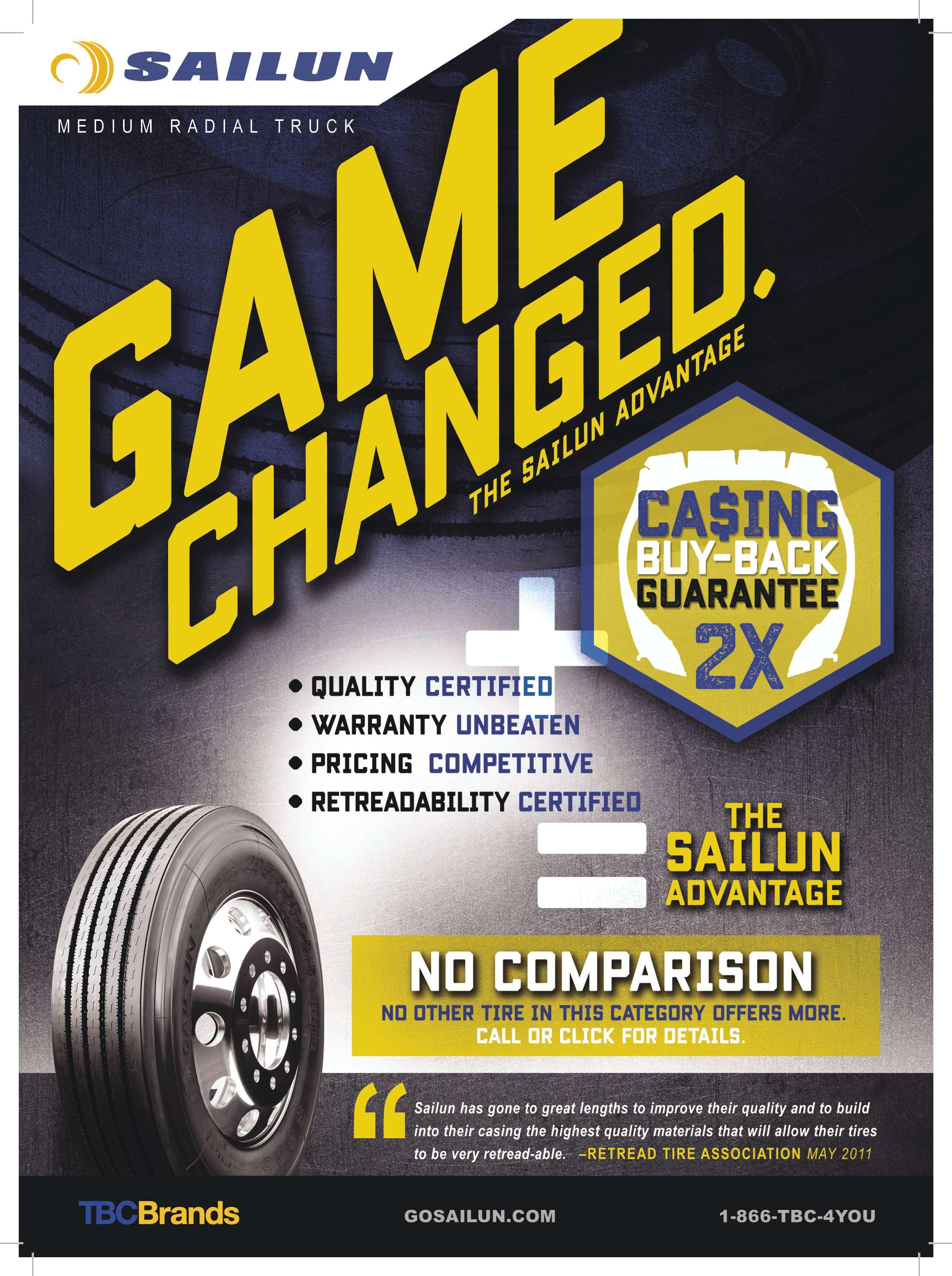
When we design a tire like the Galaxy PortStar, we have to take all those factors into account in its construction and formulate a special compound that will meet these harsh demands. We do the same thing with forklif and telehandler tires. Telehandlers are one of the types of machines we see growing in popularity due to their versatility.
Enyart, BKT: Te trend is increased radial oferings that are more economical and efcient over the long haul. Tere are more low profle and larger diameter oferings to increase stability of the forklifts when in the lift mode. End user
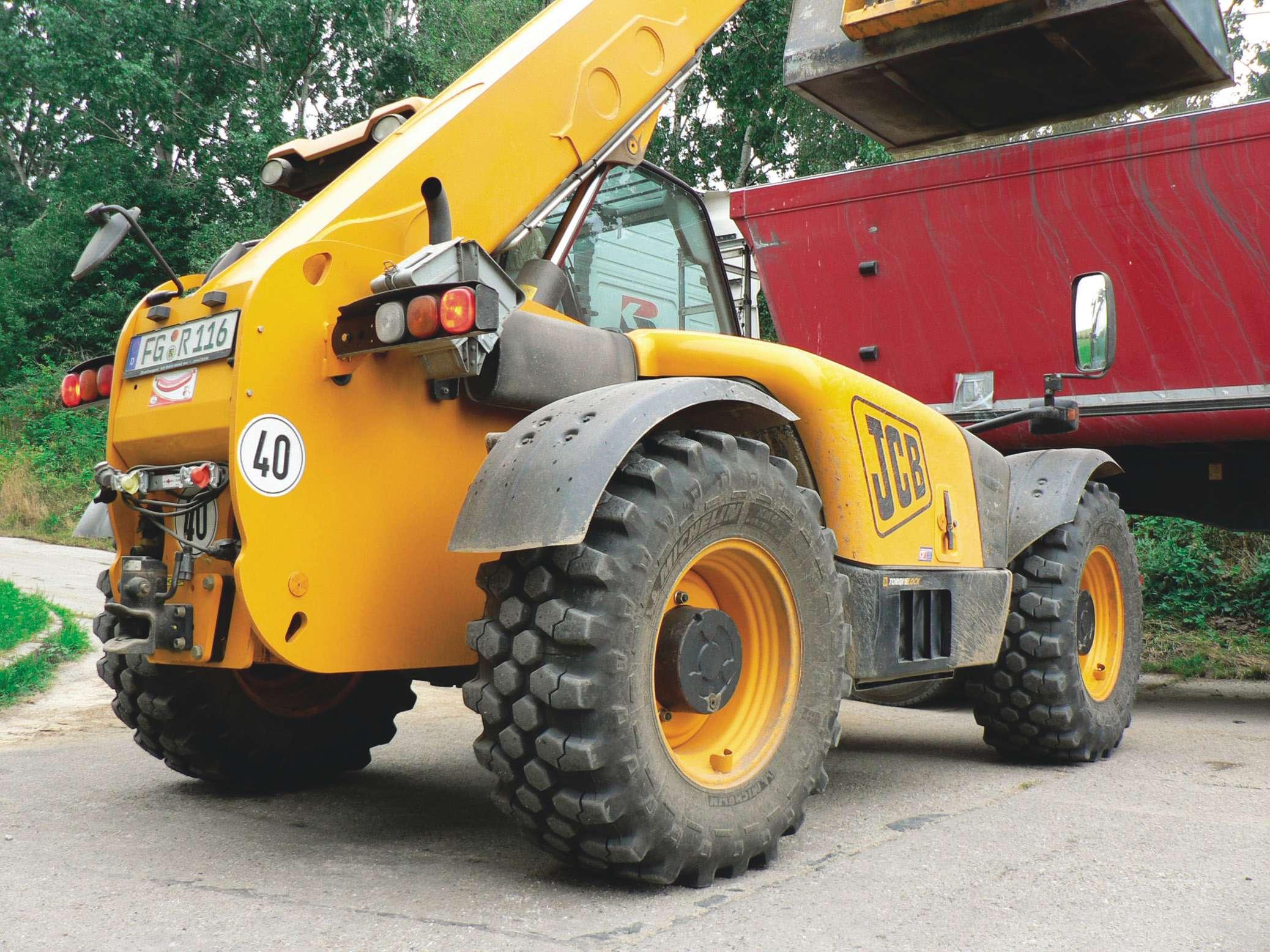
purchasing decisions appear more short term due to the past weakness in the construction industry.
Straten, Camoplast Solideal: We see a big trend toward solid tires taking up 85% of the material handling market in westernized markets. But in North America, Europe, Middle East and Africa we are also seeing a very strong presence of solid tires. With regards to technology, forklifs have evolved. For the same size of machine they’re able to do more work, travel faster and lif higher loads. Tey have stability systems and technologies to allow operators to be much more productive. Advancements in OEM forklift technology are puting a much greater demand on tires. We’re at the peak of technology to ensure our tires our capable of handling the loads, the speeds and the demands of a modern forklif feet. Tat’s everything from its ability to resist heat to its overall life and now a big push towards rolling resistance. Finding a good balance of all these performance criteria is critical. Sass, Continental: Specialized rubber compounds that will deliver the lowest rolling resistance in the industry; remanufactured products to help reuse steel bands and solid tire cores.
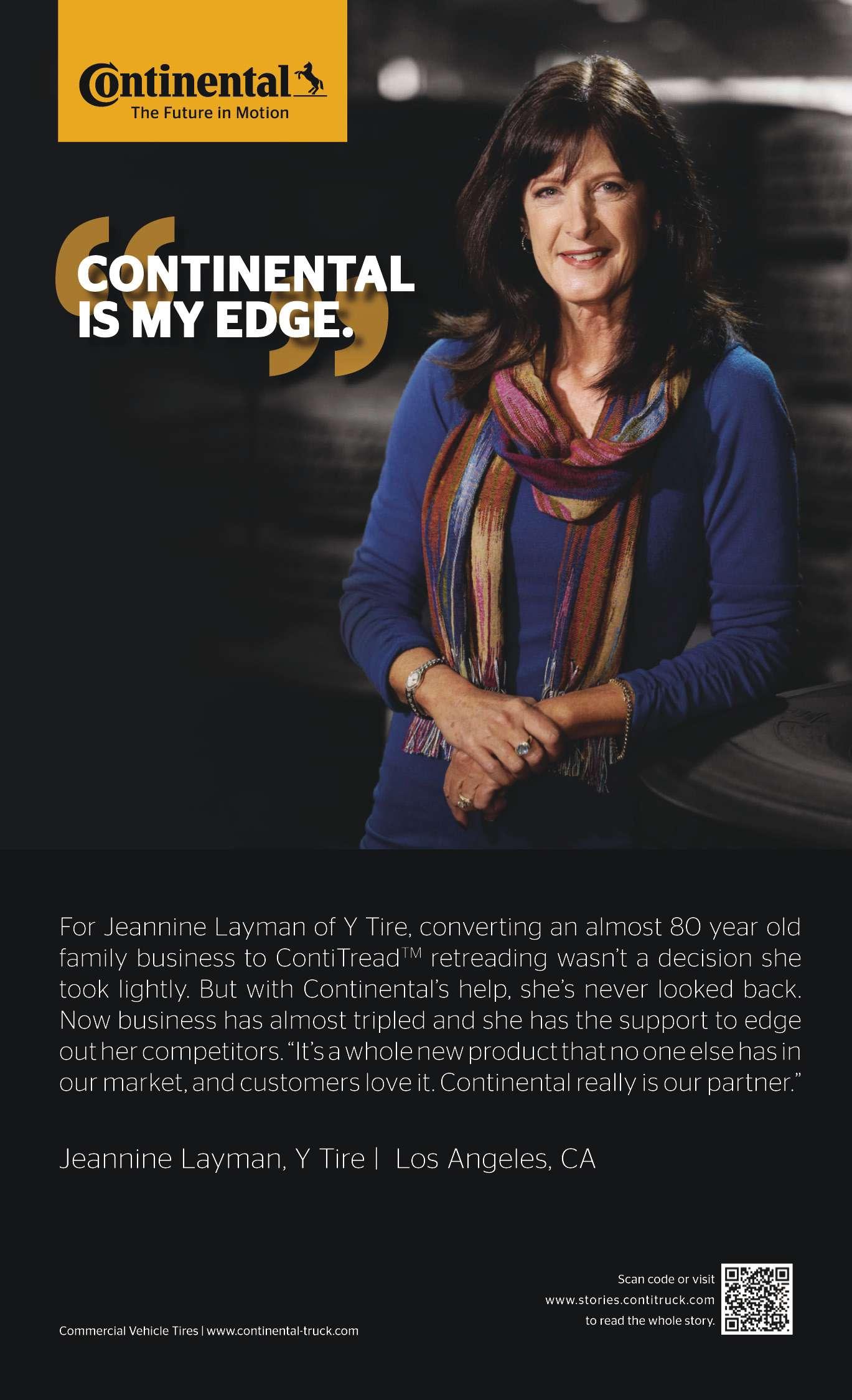
Michelin says its XMCL backhoe tire minimizes downtime and drives a higher return on investment through a steel-belted casing that adds resistance to punctures.
Van Ormer, East Bay Tire: We do not see a lot of technical advances in the industrial tire segment. In the pneumatic section it seems to still be dominated by quality bias products, even though there is an infux of cheap or mediocre imports hiting the market.
We are seeing a slight increase in radial forklif products, but not in any portion comparable to other segments of our industry like ag or OTR tires. Tere is an increase in Solid Dawg solid pneumatic and press-on tires in appropriate applications, and we think this will continue. Our own Tuf Dawg and premium Bad Dawg lines continue to grow market share in the pneumatic feld.
MacLanders, Michelin: Today’s industrial machines are capable of more power, torque, and load capacity than ever before. To maximize productivity, machines and tires are ofen pushed to their limits. High torque, overload, and rotation on the rim lead to deterioration of the bead sole. Te B2 technology, ofered exclusively by Michelin, enhances the robustness of the bead zone and extends tire life through key factors in reducing operating costs, optimizing machine performance, and improving productivity. Continental says Te Michelin Stabil’x XZM radial tire SC 18 (pictured) reduces damage due to heat generation and SC 20 tires set a benchmark and eliminates all tube-related problems for economy and through the innovation of our tubeless environmental bead seal which replaced the need of a compatibility. tube and fap. Tis radial tire also improves They are marresistance to road hazards and punctures. keted as “super elastic tires,” Rudnick, Rovince: The developwhich offer the ment of more versatile and longer lasting lowest cost per compounds.
hour to operate. Ydo Doornbos, managing director,
Trelleborg Wheel Systems Americas Inc.: Trelleborg’s Pit
Stop Line feature is the latest innovation for the materials handling industry. Pit Stop Line tires feature a highly visible orange line. Tis indictor is designed to reveal itself across the surface of the tire when it reaches the point where it should be replaced. Replacing tires too early costs you money, replacing too late can have profound safety implications.
With the Pit Stop Line appearing 100 hours or fve to 15 working days before the tire needs replacing, operators are able to plan their tire changes, avoiding unplanned downtime.
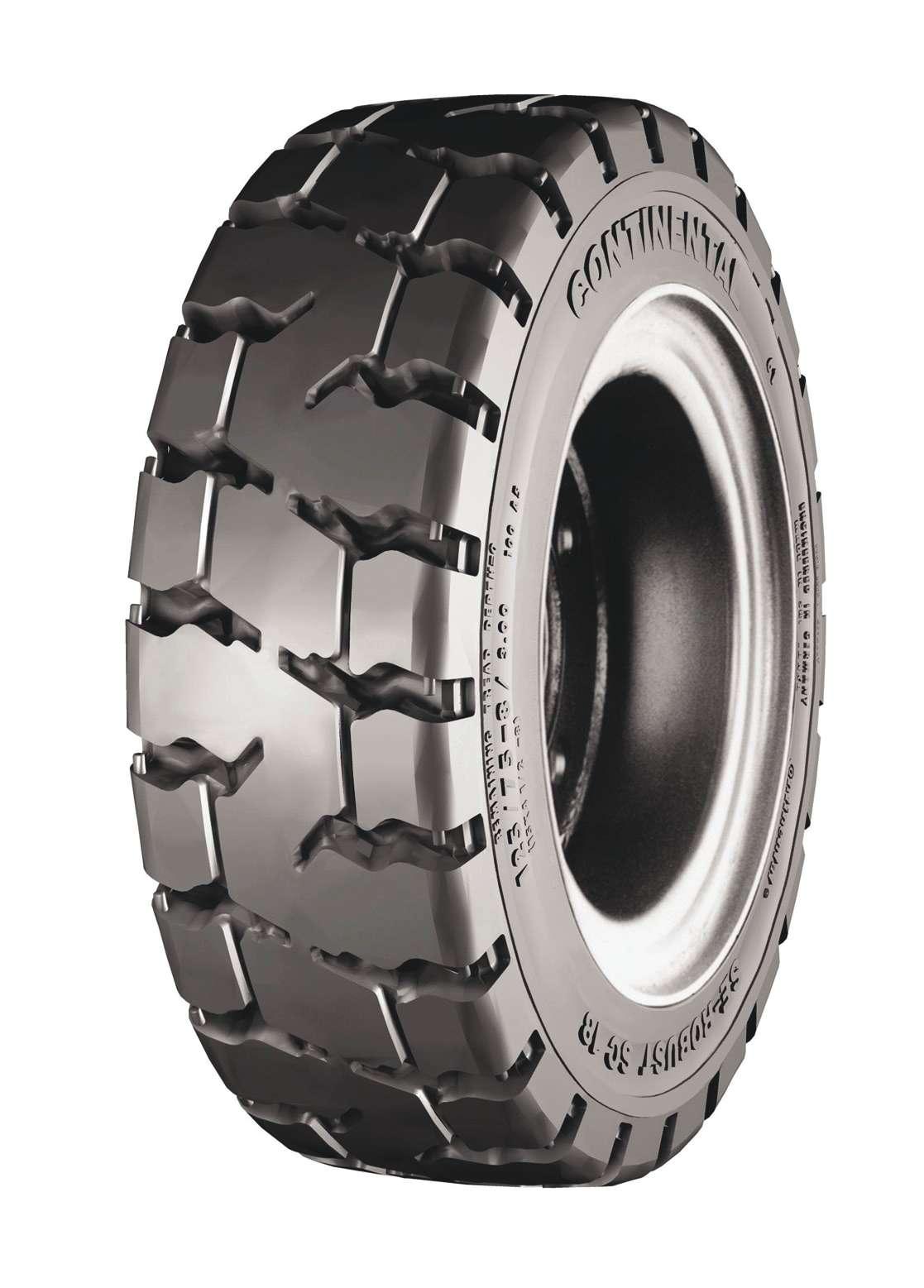
MTD: Are you seeing more radialization in forklif tires and material handling tires? If yes, what is driving the demand? Besancon, Alliance: Te need for stability and stif sidewalls means we probably won’t see a tremendous shif to radials in material handling tires. Te key to any tire, be it bias or radial, is that the tire must deliver not only a cost-per-hour advantage, but also address all of the operational needs of the application. Radial tires can typically deliver a very good cost per hour in many applications, but we must never forget By reducing vibrathe overall need for stability in a material tion, the continuhandling operation. ous center lug We are always making sure we develop of the Solideal Xtreme forklift tire purpose-built tires for an application so lowers heat buildwe won’t rule out any type of construction up, increases life, as long as it stands up to the challenges of improves operator the machine and the environment. Where comfort and slows we may see a shif to radials is in material wear on driveline components, handling, if the radial tires can deliver according to the more cost-efciency over the life of the company. tires. But I don’t think they’re a factor yet.
Enyart, BKT: Radialization of this market has been promoted primarily by the manufacturers as they know the long-term benefts and decreased costs of radials in this application.
Te construction business has had several years with a depressed demand, and it appears that upgrading to premium tires is difcult at this point. As the industry and economy recovers, buyers will
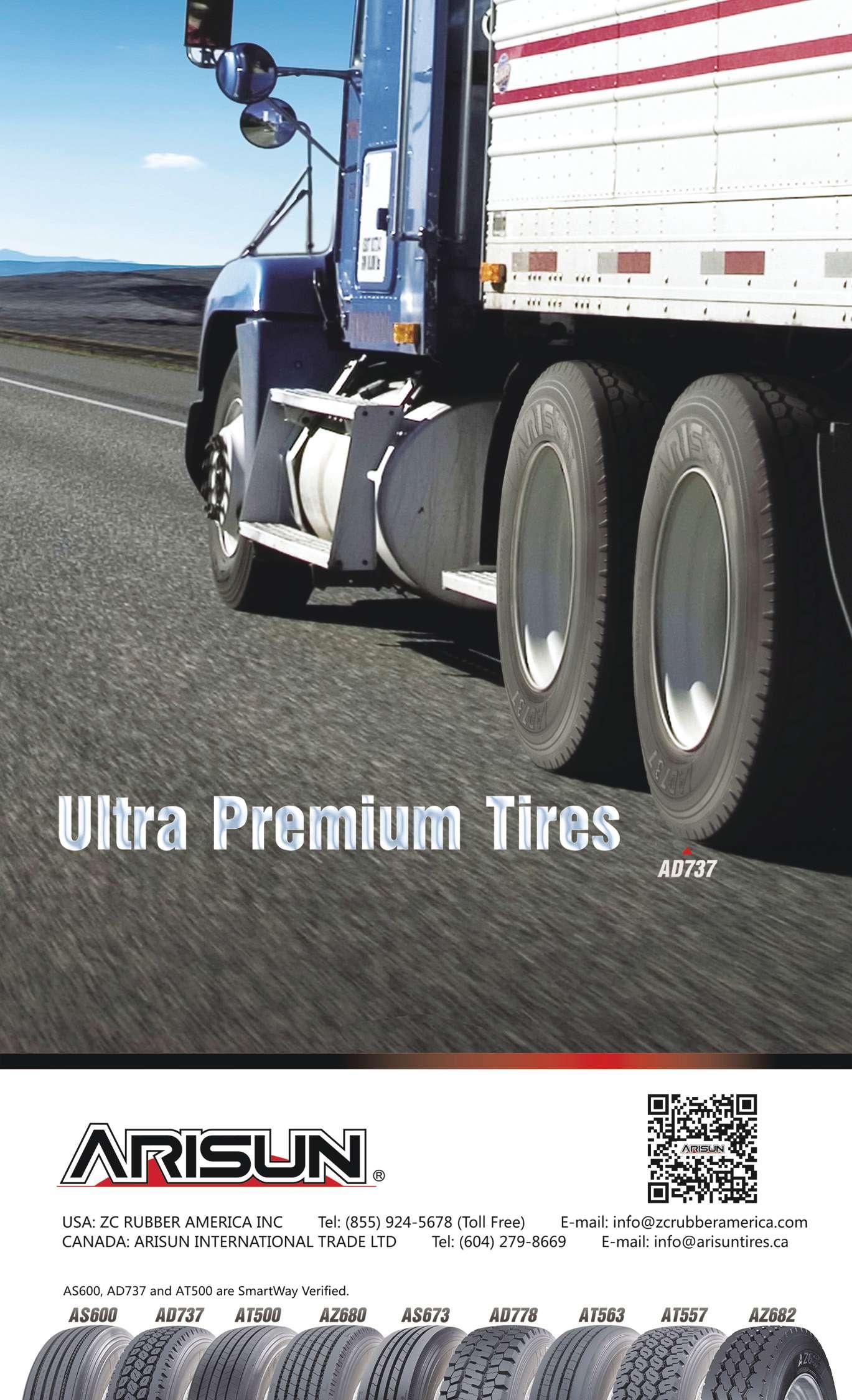
be more inclined to invest in long-term solutions to their tire needs.
Straten, Camoplast Solideal: We don’t see any radialization at all. Tere are a number of reasons. Generally a forklif is traveling around 12 miles per hour at top speed. So it doesn’t require the ability to travel at higher speeds that a radial tire would provide. You also have the drawback of radials in that they do
Rovince offers a full line of resilient cushion press on (pictured) and solid pneumatic rubber tires, all of which come in black or non-marking rubber.
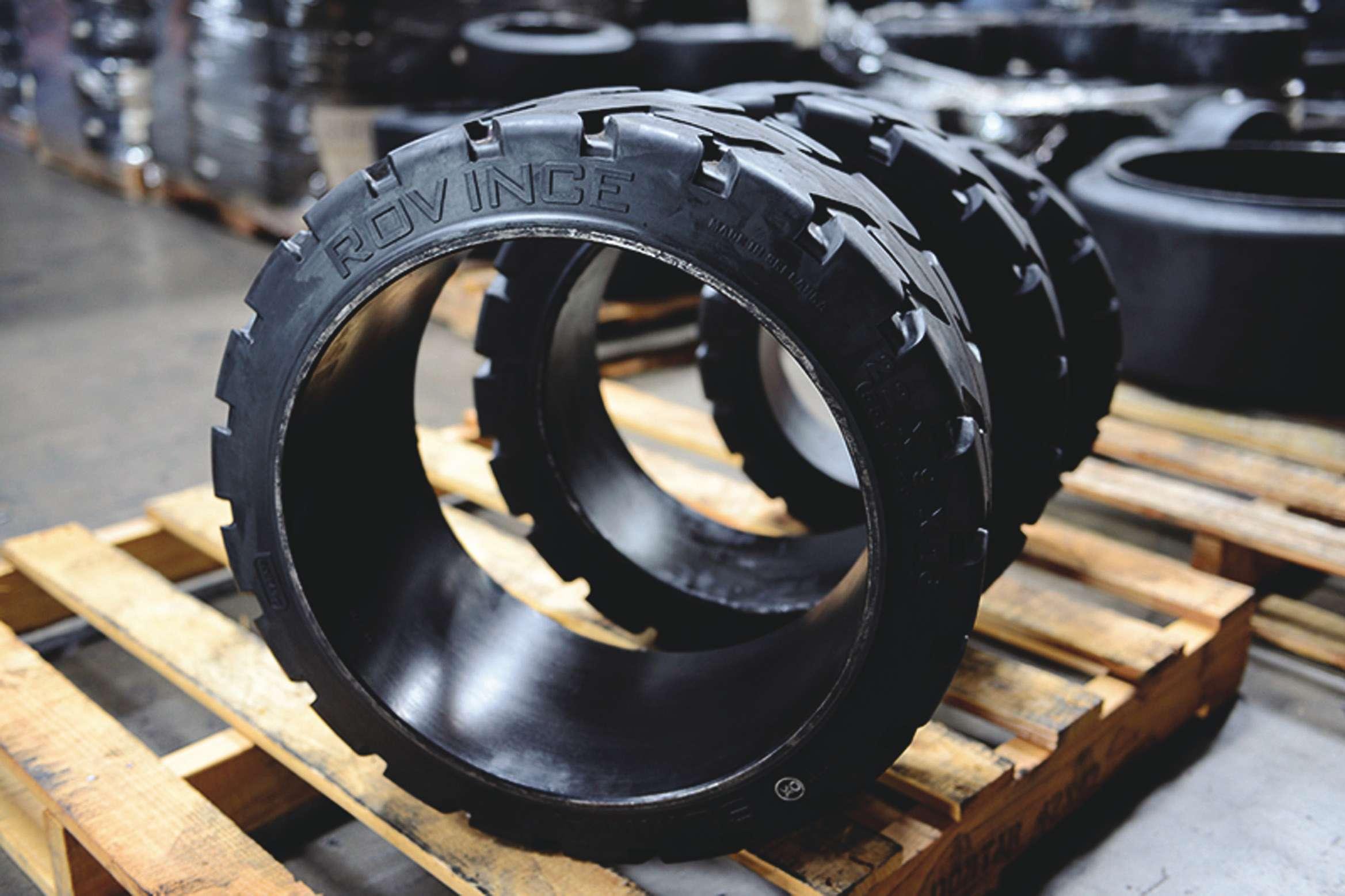
not have the stability that you would get out of the solid tire. You don’t have the puncture resistance and as much tread life with radials either.
Radials have their place, specifcally in the port markets on large container handlers where you are running 25-inch tires. But in the mass forklif feets there is no need or trend toward radialization.
Sass, Continental: Only in larger applications to replace bias ply construction. Sidewall durability continues to plague the radial market. Press on bands and solid tires will still be the dominant players.
MacLanders, Michelin: Because there is a push for radialization for longevity, the Michelin XZM radial product ofers exceptionally long life time: 2.0 to 7.5 times versus bias and 2.0 to 3.0 times versus pneumatic shaped solids. Te Michelin XZM ofers comfort without suspension. Tis equates to beter shock absorption, protection of the operator, possibility to carry fragile goods, and protection of the machine.
Rudnick, Rovince: No, we have not seen a push for radials at all in the Southern California market. Bias pneumatics and solid tires are, hands down, still the most sought afer types of forklif tires. ■
An orange line embedded in Trelleborg’s new Pit Stop Line tire appears across the surface of the tire when it reaches the replacement point, according to the company.
